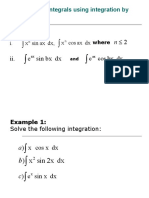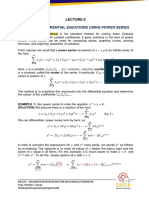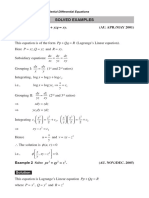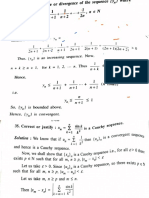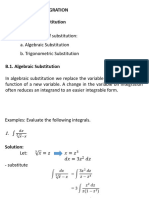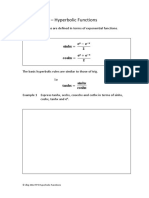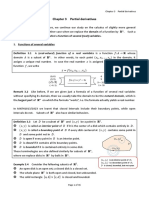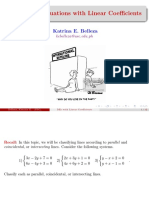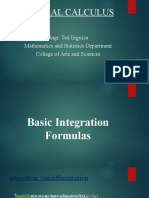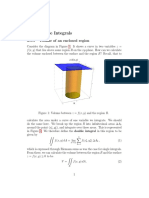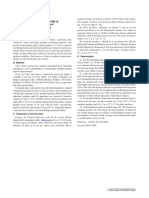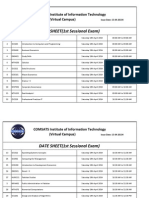0% found this document useful (0 votes)
729 views30 pagesMultiple Integrals Notes
The document introduces multivariable integral calculus and defines the definite integral of a function f from a to b as the limit of Riemann sums as the number of intervals n approaches infinity. It then motivates finding the mass of a thin cardioid plate using a grid to divide the region into subregions and approximating the integral as a sum over each subregion. Finally, it defines multiple integrals over rectangular domains as double limits of Riemann sums, and iterated integrals as integrals of integrals.
Uploaded by
Jayshree MohanCopyright
© © All Rights Reserved
We take content rights seriously. If you suspect this is your content, claim it here.
Available Formats
Download as PDF, TXT or read online on Scribd
0% found this document useful (0 votes)
729 views30 pagesMultiple Integrals Notes
The document introduces multivariable integral calculus and defines the definite integral of a function f from a to b as the limit of Riemann sums as the number of intervals n approaches infinity. It then motivates finding the mass of a thin cardioid plate using a grid to divide the region into subregions and approximating the integral as a sum over each subregion. Finally, it defines multiple integrals over rectangular domains as double limits of Riemann sums, and iterated integrals as integrals of integrals.
Uploaded by
Jayshree MohanCopyright
© © All Rights Reserved
We take content rights seriously. If you suspect this is your content, claim it here.
Available Formats
Download as PDF, TXT or read online on Scribd
/ 30





